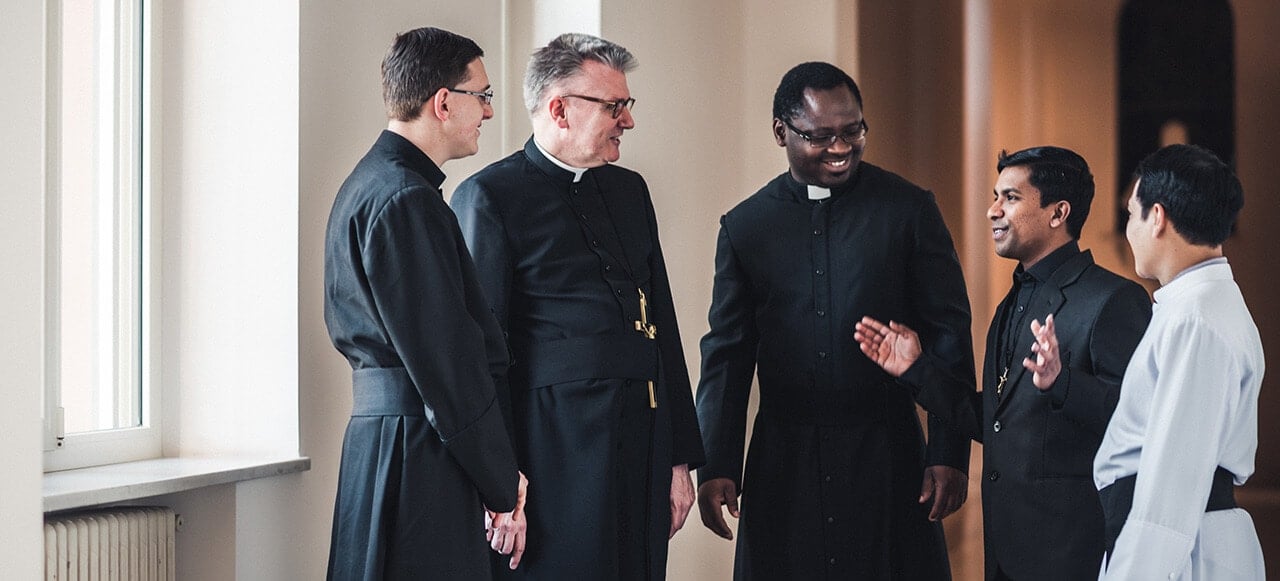On December 9, 1990, Pope John Paul II proclaimed officially, in the name of the Church, the sainthood of Marguerite d’Youville, foundress of the Sisters of Charity, also known as the Grey Nuns of Montreal. This meritorious community was founded in 1738. One century later. they responded to an appeal from Bishop Norbert Provencher, the missionary bishop of Red River. A first group of four nuns left Montreal on April 24, 1844, and arrived at Saint Boniface after a tiring voyage of two months in birch bark canoes. They showed to the world, by their great charity in the missions of Western Canada, that they could live up to the sanctity of Saint Margaret d’Youville. Like mother, like daughters.
Missionary Odyssey of the Oblates
In June of 1845 the Oblates of Mary Immaculate undertook a similar voyage which would ultimately result in peacefully winning over Amerindian tribes as far as the Arctic Ocean. Wherever the population was deemed sufficient, the missionaries, as they were taught by Father Alxandre Taché, did not delay in establishing missions in the West and all along the Mackenzie River. In 1859 they reached Good Hope, near the Arctic Circle, at 3,000 kilometers from Saint Boniface. Father Etienne Champagne O.M.I. wrote: “What is most outstanding about this missionary epic is not the number of conversions, but the establishing of bases, in less than fifteen years, at all the strategic points in a land as large as a continent. And this marvel of the apostolate was accomplished by a handful of missionaries, having at their disposal only very primitive human means and very limited resources.”
The Daughters of Saint Marguerite D’Youville
It must be added that in this “epic” the Oblates greatly benefited from the precious help of the Gray Nuns of Montreal. In many places these “heroic women” took charge of the education of children, whether they were Montagnais, Cris, or Denes. Hundreds of these valiant religious women added their prayers, sacrifices, sufferings, and ardent zeal to the dedication of the Oblates by establishing schools, hospitals, and orphanages. This was how they made Jesus Christ known to the people. They ran into all kinds of dangers while enduring the inconveniences of threatening rapids in the rivers.
We recall one of these voyages among may similar ones. At the request of Bishop Isidore Clut, two nuns from Fort Providence agreed to come to Athabaska to open a Catholic school. Two boats were selected to accommodate them. One was manned by Vincent, a woodsman, originally from Sorel. An Amerindian rowed in front, a nun and a little girl sat in the middle, and the responsible guide was at the rear. Later, Vincent related to Father Watelle, in characteristic language, the mishaps of this adventure.

In the name of obedience, be still
“Ah yes, Father, we were in the rapids, terrible ones! The canoe was dancing, that’s all I can say. But, woe to us, at every jump it made in the big waves the sister stiffened and wanted to get up as if to jump on the rocks. The more I said: sister, keep still or we perish, the more nervous she became, holding on to one side then on to the other. The Gray Nuns are usually brave and not “excited” during voyages! And with all this she was shedding enough tears to deepen the river waters. Finally, at the most dangerous moment, as we were about to be “grabbed” by an eddy and tipped, I remembered something I had heard that was infallible with nuns, while I was at school in Sorel. In a loud voice I cried out: ‘Sister, in the name of obedience, be still!’ Father, lightning could have struck her and she would not have been more “crushed”; she sank flat to the bottom of the canoe and no longer moved even a little finger. That’s how come we’re not dead yet.”
The school at Athabaska began in an open shed, and this “temporary” arrangement lasted seven years!
André DORVAL, OMI
